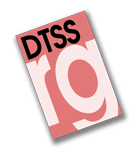Evolución de los expedientes de regulación temporal de empleo: especial referencia al Real Decreto–ley 38/2021, 28 de febrero. (RI §425192)

Evolution of temporary employment regulation files: special reference to Royal Decree-Law 38/2021, february 28 -
Priscila Martín Vales
Los expedientes de regulación temporal de empleo han sido una de los instrumentos más utilizados por nuestras empresas en estos últimos años. En las presentes líneas se analizarán dichos instrumentos en tres fases a razón del contexto social y normativo. Primeramente, se comenzará con la etapa anterior a la irrupción del Covid-19, es decir, lo establecido por el legislador de 2015, en el artículo 47 del Estatuto de los Trabajadores, fundamentalmente. Posteriormente se explicará la evolución que ha tenido este mecanismo de flexibilidad y mantenimiento del empleo desde la declaración del estado de alarma de 14 de marzo de 2020, hasta la publicación del reciente Real Decreto-ley 32/2020, de 28 octubre. Y, por último, en relación con esta norma, se analizarán los cambios realizados por el legislador, previo acuerdo de los agentes sociales, en los expedientes de regulación temporal de empleo.
I. INTRODUCCIÓN.- II. EXPEDIENTES DE REGULACIÓN TEMPORAL DE EMPLEO POR CAUSAS ECONÓMICAS, TÉCNICAS, ORGANIZATIVAS O DE PRODUCCIÓN. III. EXPEDIENTES DE REGULACIÓN DE EMPLEO COVID-19.- IV. EXPEDIENTES DE REGULACIÓN DE EMPLEO TRAS EL REAL DECRETO-LEY 28/2021 DE 28 DE DICIEMBRE. 1. Expedientes de Regulación Temporal de Empleo. 1.1. Expedientes de Regulación Temporal de Empleo por causas económicas, técnicas, organizativas o de producción. 1.2. Expediente de Regulación Temporal de Empleo por fuerza mayor temporal. 2. Mecanismo RED de Flexibilidad y Estabilización del empleo. 3. El papel de la Inspección de Trabajo y Seguridad Social en los expedientes de regulación temporal de empleo y en el Mecanismo RED.- V. CONCLUSIONES.
The temporary employment regulation files have been one of the instruments most used by our companies in recent years. These instruments will be analyzed in these lines in three phases based on the social and regulatory context. First, it will begin with the stage prior to the emergence of Covid-19, that is, what is established by the 2015 legislator, fundamentally in article 47 of the Workers' Statute. Subsequently, the evolution that this flexibility and maintenance of employment mechanism has had will be explained from the declaration of the state of alarm on March 14, 2020, until the publication of the recent Royal Decree-Law 32/2020, of October 28. And, finally, in relation to this rule, the changes made by the legislator, with the prior agreement of the social agents, in the temporary employment regulation files will be analyzed.
I. INTRODUCTION.- II. RECORDS OF TEMPORARY EMPLOYMENT REGULATION FOR ECONOMIC, TECHNICAL, ORGANIZATIONAL OR PRODUCTION REASONS.- III. COVID-19 EMPLOYMENT REGULATION FILES.- IV. EMPLOYMENT REGULATION FILES AFTER ROYAL DECREE-LAW 28/2021 OF DECEMBER 28. 1. Records of Temporary Employment Regulation. 1.1. Records of Temporary Employment Regulation for economic, technical, organizational or production reasons. 1.2. File of Temporary Regulation of Employment due to temporary force majeure 2. RED Mechanism of Flexibility and Stabilization of employment. 3. The role of the Labor and Social Security Inspection in the temporary employment regulation files and in the RED Mechanism.- V. CONCLUSIONS.
